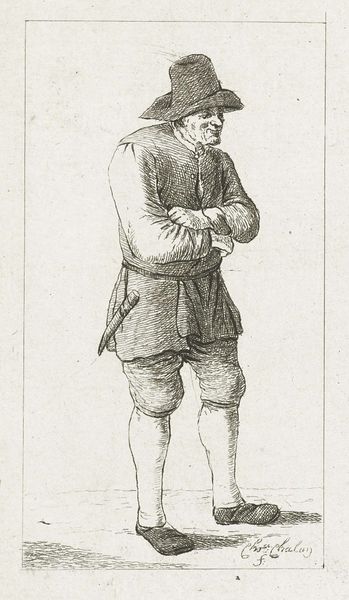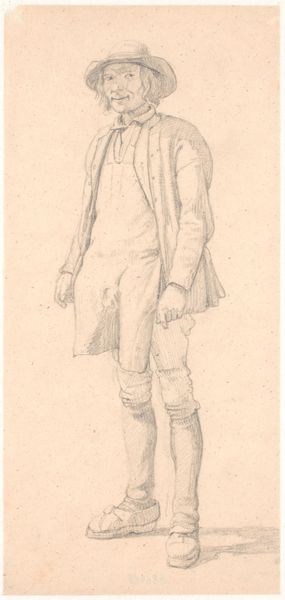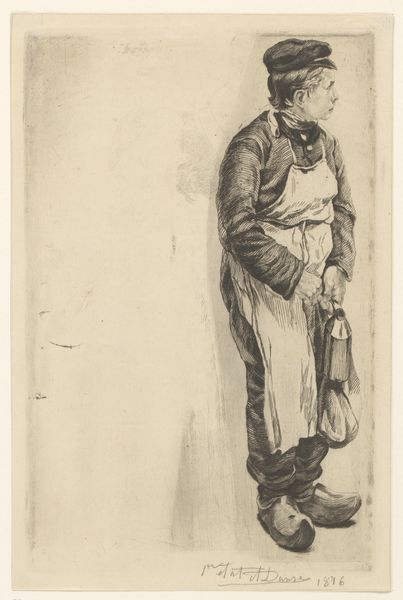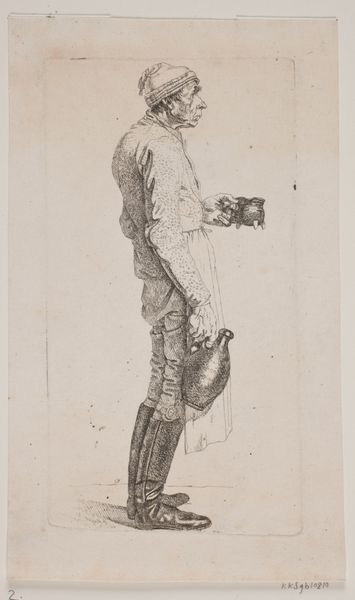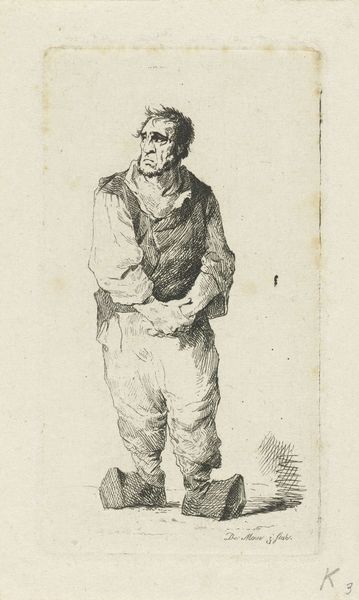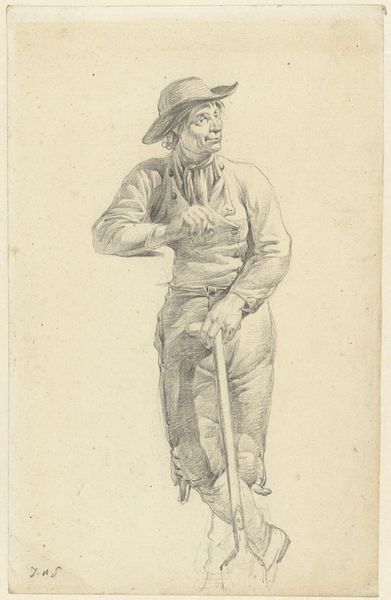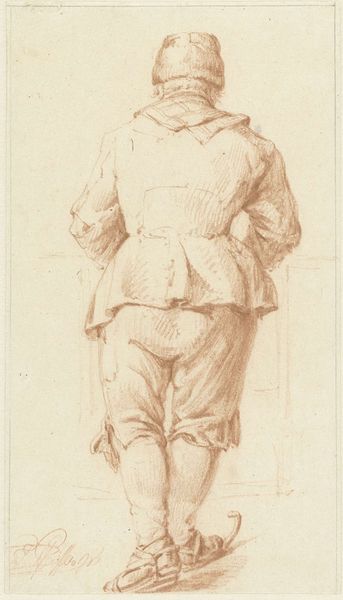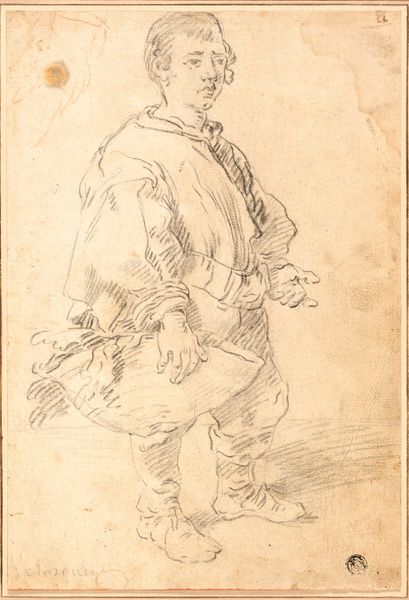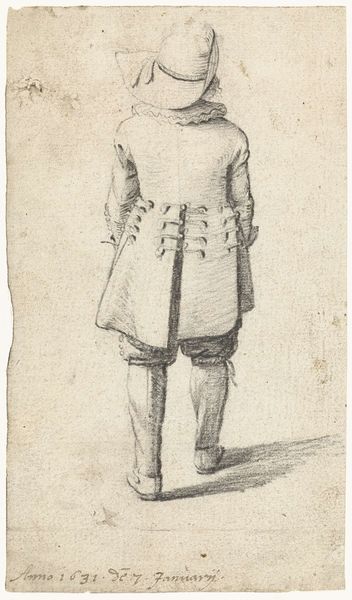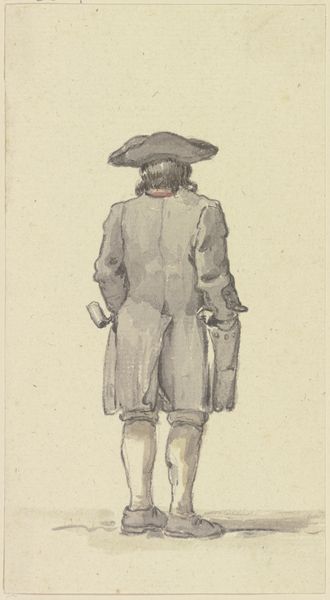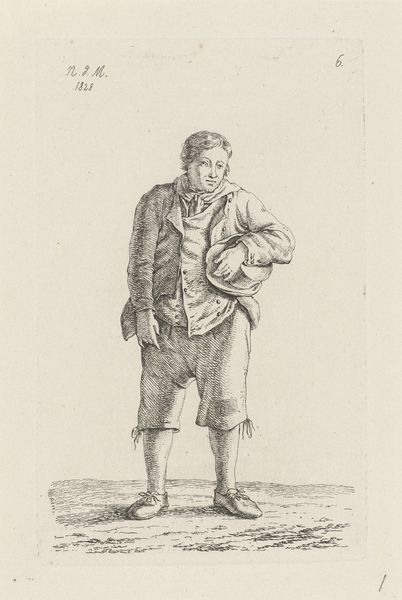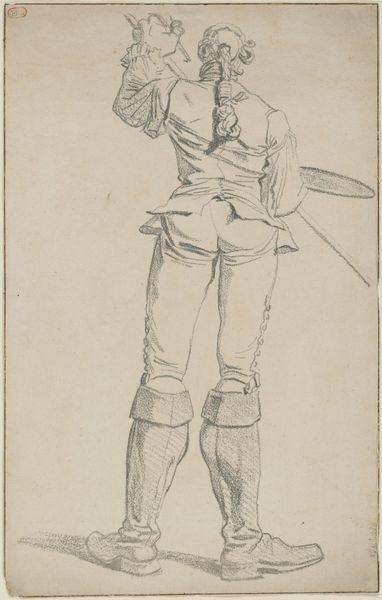
print, etching, engraving
#
portrait
#
dutch-golden-age
# print
#
etching
#
figuration
#
genre-painting
#
engraving
#
realism
Dimensions: height 106 mm, width 61 mm
Copyright: Rijks Museum: Open Domain
Curator: This etching, "Visverkoper," created in 1828 by Anthonie Willem Hendrik Nolthenius de Man, offers a glimpse into everyday life in Amsterdam during the Dutch Golden Age. It’s an example of realism, depicting a simple, working-class figure. Editor: There’s a certain weariness conveyed here. The man’s posture, head bowed, arms clasped behind him. It's a study in quiet resignation. Even the lines of the etching, so delicate, seem to underscore a life lived in muted tones. Curator: Absolutely. The artist clearly intended to represent a common trade within the societal fabric. Prints such as this, affordable and accessible, circulated widely, providing glimpses into different social strata, a visual catalogue of professions within urban life. Editor: And that basket, heavily laden across his torso… It serves as a yoke, doesn't it? He *is* what he carries: sustenance, labour, the smell of the sea ingrained in his clothes and hands. It’s the archetype of the working man, carrying his burden. Curator: Precisely. By the 19th century, such depictions were considered essential to understanding the fabric of society. These images served an important socio-documentary purpose; prints helped spread visual information, offering those in other professions or classes access to other worlds and their associated concerns. Editor: You can see echoes of other similar figures—the humble peasant, the traveling merchant—figures from folklore almost. It strikes a deeper cord precisely because of the humbleness. It resonates. He could be anyone. Or, everyone who carries the burden of survival in difficult conditions. Curator: The seemingly mundane is charged with importance, reflecting an era where portraying ordinary people, at their tasks, took a more prominent public position in the arts. These artworks spoke to the growing concerns about representation and the lives of all segments of the social population, within the community’s historical narrative. Editor: Considering that perspective enriches my interpretation enormously. Initially, it felt to me like the rendering of a quiet melancholic soul, now I consider it from within the socio-political sphere and recognize how Nolthenius de Man participates within contemporary discourse about Dutch society. Curator: Indeed, seeing this artwork reveals both the micro-level personal existence and larger collective values present at the moment of its making, and reminds us of our own public role as viewers today. Editor: Thanks to the delicate strokes, our fishmonger persists—casting his long shadow forwards into the current moment.
Comments
No comments
Be the first to comment and join the conversation on the ultimate creative platform.
